MEDIA FOR CHANGE NETWORK
Insights for African countries from the latest climate change projections
Published
4 years agoon
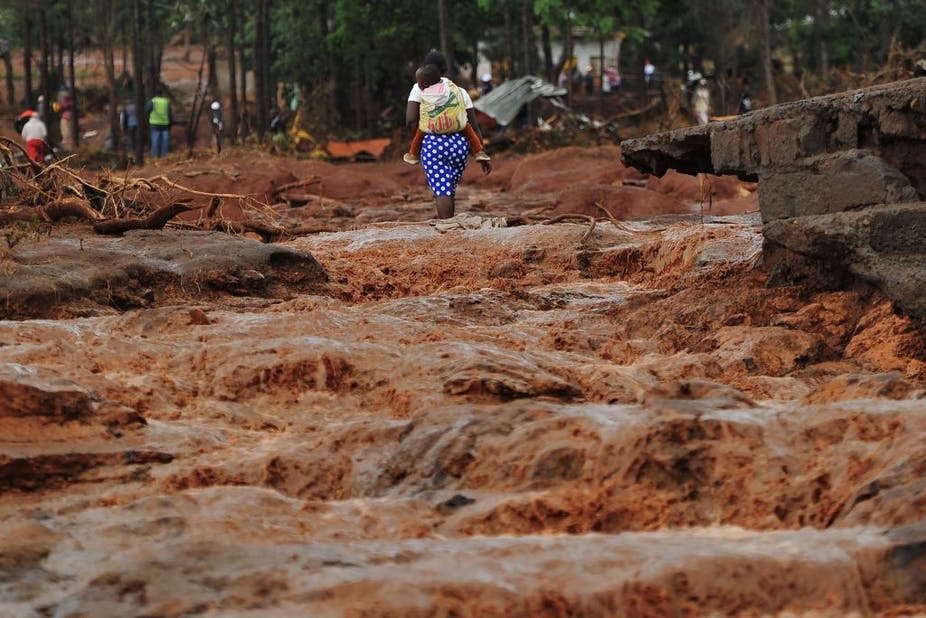
Flooding is projected to increase in eastern Africa
The Intergovernmental Panel on Climate Change (IPCC) – a body of the UN tasked with providing scientific information on climate change – has released a major new report, pulling together evidence from a wide range of current and ancient climate observations. It’s the most up-to-date understanding of climate change, bringing together the latest advances in climate science.
It is crucial that we have a good understanding of the findings as they give an indication of what our future could look like.
According to the report global warming is evident, with each of the last four decades being successively warmer than any decade that preceded it since 1850. Average precipitation on land has also increased since the mid-20th century. In addition, there is high confidence that mean sea level increased by between 0.15 and 0.25m between 1901 and 2018.
The major concern is that as warming continues, more extreme climate events, such as droughts, are projected to increase in both frequency and intensity. This warming is mainly driven by greenhouse gas emissions from human activities such as burning fossil fuels (coal, natural gas, and oil) and coal production.
Get news that’s free, independent and based on evidence.
When it comes to African countries, the report projects an increase in average temperatures and hot extremes across the continent. The continent will likely experience drier conditions with an exception of the Sahara and eastern Africa.
Alarmingly, the rate of temperature increase across the continent exceeds the global average. In addition, as warming continues, the frequency and intensity of heavy rainfall events are projected to increase almost everywhere in Africa. Maritime heatwaves and sea level rises are also projected to increase along the continental shores.
Looking into the future, global warming could lead to an increase in hot extremes, including heatwaves. It could also lead to a decrease in cold extremes.
The projected dry and hot conditions will have a devastating impact on a continent where the economies of most countries, and the livelihoods of most people, are dependent on rain-fed agriculture. In fact, changes to the climate will affect almost all parts of our lives.
Regional impacts
In a scenario where global warming will reach at least 2°C by mid-21st century (as predicted by the report), southern Africa is highly likely to experience a reduction in mean precipitation (water vapour that falls, such as rain or drizzle or hail). This will adversely affect agriculture. Specifically, the region is likely to witness an increase in aridity, and droughts. We are already seeing this in Madagascar and South Africa.
This has serious implications for all sectors including agriculture, water and health. Drought would also likely reduce hydroelectric generation potential, adversely affecting energy dependent sectors. We are already seeing this at the Kariba dam which sits between Zimbabwe and Zambia.
In addition, there will be more tropical storms in the region. In southern Africa there’s been a southward shift in the occurrence of tropical cyclones. This is due to sea temperatures increasing as a result of global warming. The concern is that these events will be particularly destructive as seen in Madagascar and over Mozambique.
Read more: Rising sea temperatures are shaping tropical storms in southern Africa
In relation to eastern Africa, the report projected an increase in mean precipitation that favours agriculture. However, increases in the frequency and intensity of heavy precipitation and flooding may cause a counter effect in some areas, such as arid and semi-arid lands.
There has been some conflicting information regarding rainfall in eastern Africa. This follows observations that the general circulation models, used in preparation of IPCC reports, do not simulate the observed rainfall well over the region. Most models project increase in rainfall while observations report the opposite. This has been termed ‘the paradox of east Africa climate’. This observed shortening of rainfall season that is not captured by the models explains the paradox.
Besides rainfall, the recorded and projected temperature which is expected to increase will decrease the snow and glaciers in the region. A rise in temperatures will result in a rise in malaria cases especially in highland areas within the region.
Northern Africa is a climate change hotspot. The report anticipates with high confidence increase in temperatures in the region,causing extreme heatwaves. Projected drying will increase aridity that already begun to emerge in the region and worsen water scarcity.
Read more: A worsening water crisis in North Africa and the Middle East
Further, the situation will increase the risk of forest fires, a threat to ecosystems. As is currently seen in Algeria where, so far this year, more than 100 fires have been reported across 17 provinces, killing over 40 people.
The report also anticipated that there will be a reduction in mean wind speed over northern Africa. The wind speed is dependent on temperature and consequently atmospheric pressure changes. This will limit the region’s wind power potential, however – on a positive note – it will equally reduce dust storms that cause health impacts, such as causing and aggravating asthma, and bronchitis.
Similarly, west and central Africa are projected to record a reduction in mean precipitation and experience more agricultural and ecological droughts. All these cast a dark cloud on agriculture and water in the region.
Read more: Lagos is getting less rain, but more heavy storms. What it can do to prepare
Along the African coastlines, the relative sea-level rise is likely to contribute to an increase in the frequency and severity of coastal flooding in low-lying areas, like the recent cases in Lagos, Nigeria. This causes massive destruction to delicate coastal ecosystems and will displace communities that live in coastal towns. The sea level rise equally causes saltwater intrusion, limiting availability of fresh water.
Read more: Climate change is affecting agrarian migrant livelihoods in Ghana. This is how
Which way for Africa?
Despite the projection of decrease in mean precipitation over nearly all the regions of Africa, heavy precipitation and pluvial flooding is likely. The increase in wet extremes has far reaching effects on nearly all socioeconomic sectors, from agriculture, water, environment to infrastructure. These are some of the key sectors in socioeconomic development.
This – compounded by growing populations – gives a worrying picture of the challenges that lie ahead. This is likely to widen the existing development gap, calling for concerted effort to strengthen response mechanisms to future challenges posed by climate change.
Original Source: The conversation
Related posts:

 Climate change has reduced agricultural productivity by 34 percent in Africa
Climate change has reduced agricultural productivity by 34 percent in Africa
 Africa warming faster than rest of world: IPCC Sixth Assessment Report
Africa warming faster than rest of world: IPCC Sixth Assessment Report
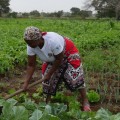 Africa must unlock the power of its women to save climate change
Africa must unlock the power of its women to save climate change
 African women unite on the frontlines of the Climate Crisis
African women unite on the frontlines of the Climate Crisis
You may like
-


Africa warming faster than rest of world: IPCC Sixth Assessment Report
-
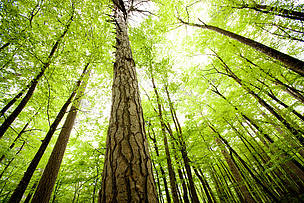

WWF launches new impact platform that engages businesses and investors to deliver on sustainability ambitions
-


Tropical forests in Africa’s mountains store more carbon than previously thought—but are disappearing fast
-
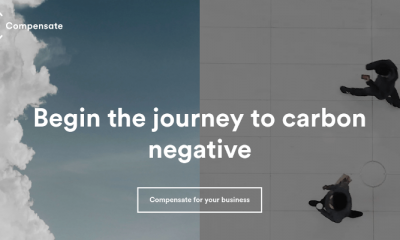

Finnish carbon offsetting firm Compensate finds 91% of carbon offset projects fail its evaluation process. Of course the remaining 9% will also not help address the climate crisis
-


Water hyacinth threatens Lake Victoria’s ecosystem
-


Put people above profits – Climate Activists urge Total to defund EACOP
MEDIA FOR CHANGE NETWORK
COP30 : a further step towards a Just Transition in Africa
Published
1 day agoon
January 4, 2026
Climate change has emerged as one of the predominant challenges for Africa, through its cascading environmental, social and economic effects.
Africa is still a continent where over 600 million people do not have access to electricity1, 230 million people do not have access to safe drinking water2, and more than 300 million people continue to suffer from hunger3, while its population is expected to double to 2.5 billion people by 20504.
It accounts for only 3.6% of global greenhouse gas emissions5, while the continent is home to 18.8% of the world’s population6.
Yet there is a real risk that it will endure some of the worst impacts of climate change.
In the assessment and projections made by the African Adaptation Initiative in the Africa State of Adaptation Report (2023)7, the conclusions are stark: the macroeconomic costs associated with the various adverse effects of climate change are significantly higher in Africa than in other regions of the world. African economies are highly sensitive not only to climate-related disasters, but also to annual variations in climate variables. The economic and livelihood impacts of climate change in Africa are therefore profound and are already leading to a slowdown in economic growth. And while the extent of this impact varies across the continent, seven of the ten countries identified as most vulnerable to the effects of climate change are in Africa8.
However, at the same time, Africa has enormous natural resources that could sustainably support its economic and social development, while positioning it as a key global player in the fight against climate change, thanks in particular to its wealth of minerals and biodiversity.
It is therefore in these three areas (adaptation, development and climate action) that it must be able to mobilise its resources and attract public and private funding. Needs are high: Africa’s climate finance needs are now measured in the trillions9.
On each of these points, COP30, held in Belém (Brazil) from 10 to 21 November 2025, made several advances.
1. Ensuring a Just Transition
In line with the Sustainable Development Goals (SDGs), Just Transition refers to the need to implement the sustainability transition in a socially just way that guarantees proper engagement with and support for affected and vulnerable people and communities. A declination of climate justice, it also acknowledges that without actively including and supporting affected groups within the transition, the disruptive changes brought about by climate action risk resulting in political opposition, contestation and even climate backsliding.
The imperative of a Just Transition was recognised already in the 2015 Paris agreement, but the work on Just Transition within the UNFCCC regime has gained more momentum in the past few years, with the Just Transition Work Programme10 established at COP28 in Dubai in 2023.
The Addis Ababa Declaration on Climate Change and Call to Action11 adopted on 10 September 2025 during the Second African Climate Summit also emphasized the importance of achieving Just Transition pathways in the implementation of all pillars of climate action under the Paris Agreement.
1.1 The Just Transition Mechanism
COP30 went a step further, through what is praised as one of its most concrete and successful achievements: the decision to develop a Just Transition Mechanism12. Popularly known as the Belém Action Mechanism or BAM, its purpose is ‘to enhance international cooperation, technical assistance, capacity-building and knowledge-sharing, and enable equitable, inclusive just transitions’.
Importantly, the decision acknowledges the need to support the Just Transition in a manner that does not exacerbate the debt burden of countries.
This decision also provided important clarity on what the international community views as a just transition. It recognizes the ‘importance of just transition pathways that respect, promote and fulfil all human rights and labour rights, the right to a clean, healthy and sustainable environment, the right to health, the rights of Indigenous Peoples, people of African descent, local communities, migrants, children, persons with disabilities and people in vulnerable situations, and the right to development, as well as gender equality, empowerment of women and intergenerational equity’.
The Just Transition Mechanism aims to be operational by COP31 next year. In the meantime, the concrete design of the mechanism will take place.
1.2 Africa’s Special Needs and Circumstances
COP30 also formally opened a long-awaited two-year process on recognising Africa’s Special Needs and Circumstances (SNC), including a mandated conference under COP31 in 2026 and a report to COP32 in 2027 in Addis Ababa, Ethiopia.
This is a first step in response to Africa’s long-standing demand for this formal recognition, which would acknowledge its unique vulnerabilities, including low historical emissions, disproportionate climate impacts and limited adaptive capacity, and could help it attract greater climate finance and technological support in the future.
1.3 Integrated Forum on Climate Change and Trade (IFCCT)
In parallel to the UN process, Brazil launched the Integrated Forum on Climate Change and Trade (IFCCT) to better address the potentially significant consequences of trade-related environmental instruments on development and the risk of economic exclusion of developing countries, particularly the least developed countries, without recognition of historical responsibility or differences in capacity.
This initiative follows the introduction, by the European Union in particular, of trade-related climate and environmental instruments such as the Carbon Border Adjustment Mechanism (CBAM)13 and the Deforestation Regulation (EUDR)14. These measures aim to better internalise the environmental impacts of products and encourage improvements in environmental production conditions in Europe’s trading partner countries, aligning them with the constraints imposed on its own manufacturers.
Nevertheless, the EU CBAM has met with considerable resistance, both within Europe and from many countries in the Global South and the United States, which argue that it is a unilateral trade measure and question its compatibility with its international obligations under the World Trade Organisation (WTO).
This is a major challenge for South Africa due to its dependence on coal, but also for all African countries seeking to industrialise and strengthen their capacity to process, refine and manufacture components, such as batteries, rather than exporting raw materials, and may need to rely temporarily on fossil fuels.
2. Financing Africa’s Green Growth
Africa’s natural resources are first and foremost an opportunity for its population, but also for the world, in the context of the global fight against climate change and the preservation of biodiversity. COP30 saw the first breakthrough in grid financing and a major innovation in forest conservation financing.
2.1 The Climate Finance Principles to Unlock Grid Financings
Developed by the Green Grids Initiative (GGI) and advanced by COP 30 under the ‘Plan to Accelerate the Expansion and Resilience of Power Grids’, the Climate Finance Principles15 aim to address the barriers faced in emerging markets for accessing climate finance to support the development of power grids, as the diversity of generation sources that are connected to them make their environmental impact more complex to assess than for individual generation projects.
Co-developed with investors and industry representatives, these Principles establish a common approach to assessing grids’ eligibility for climate and green finance, combining system-level and project-level criteria (climate contribution, consistency, measurability and attribution).
2.2 The Tropical Forest Forever Facility (TFFF)
Recognised as one of the key achievements of COP30, the Tropical Forest Forever Facility (TFFF)16 is a proposed, large-scale, blended-finance mechanism that provides ‘payment-for-performance’ incentives to tropical forest countries for keeping annual deforestation below 0.5%, verified through agreed geospatial satellite monitoring standards. It would operate alongside the Tropical Forest Investment Facility (TFIF), a companion investment fund intended to generate returns that finance TFFF’s annual payments.
The TFIF seeks to raise up to USD 125 billion through public and private investments, hosted at the World Bank. So far, 53 countries, including 34 tropical forest countries, have endorsed the Facility. The fund has yet to reach Brazil’s $25 billion for government investments, which are intended to secure investor confidence and unlock an extra $100 billion in private financing.
If the facility reaches this $125 billion target, it would be the world’s largest blended finance mechanism of its kind.
“Sponsor” countries (and potentially philanthropic foundations) would provide 40 year, first-loss (junior) capital at rates comparable to long-dated U.S. Treasuries, creating a risk buffer to mobilise an additional ~USD 100 billion in private, corporate, and philanthropic capital.
The combined capital would be invested primarily in emerging-market sovereign and corporate fixed income (excluding fossil fuels and environmentally harmful sectors). After servicing investor returns, net profits would flow to the TFFF to fund country payments.
If fully capitalized, expected returns could generate USD 3–4 billion per year, enabling payments of roughly USD 4 per hectare of conserved forest.
At least 20% of all payments are designated to Indigenous Peoples and local communities.
3. Financing Adaptation
Adaptation is a largely underfunded area of climate action worldwide, despite growing and now urgent needs. This issue is particularly acute for developing countries. The latest United Nations Adaptation Gap Report17 shows that developing countries’ needs are 12-14 times higher than current financial flows, while wealthy nations continue to favour mitigation funding.
One of the obstacles to increasing adaptation funding is that it is easier to increase mitigation funding than adaptation funding. Mitigation activities, such as energy efficiency and the development of clean energy production, are concentrated in the wealthier developing countries and often generate a financial return, allowing them to be financed with less concessional public funds and by mobilising private funds. In contrast, investments in adaptation often bring significant economic, social and environmental benefits, but few direct financial returns, such as investments in wetland restoration for flood protection or climate-smart agriculture. Adaptation investment needs are also often concentrated in the poorest countries, which require more concessional public finance.
COP30 nevertheless showed progress in this area.
Parties adopted the 59 Belém Adaptation Indicators. Voluntary and non-prescriptive, these indicators will enable progress to be tracked under the Global Goal on Adaptation, representing a significant step forward for transparency and accountability.
They concomitantly launched the ‘Belém–Addis vision on adaptation’, a two-year policy alignment process to develop guidance for operationalising those indicators.
Parties also formalised the Baku Adaptation Roadmap, a 2026-2028 work programme for operationalising adaptation goals, including support for vulnerable nations to develop national adaptation plans.
Above all, the ‘Belém Package’ confirms a commitment to triple adaptation finance from US$40bn to $120bn annually by 2035. While this is not yet a binding commitment and leaves timing and delivery modalities largely to future finance processes, it is seen as a major political signal.
Negotiations will need to continue on issues such as reforming the international debt architecture or the Bretton Woods institutions in order to support climate finance and action.
Conclusion
While international mobilisation is important, regional mobilisation is essential and will further bolster Africa’s influence at future meetings.
As significant as COP30 was, another major event in 2025 was the second African Climate Summit in September 2025, at which African leaders and financial institutions demonstrated their ability to mobilise.
They committed to mobilising $50 billion annually in catalytic finance through the Africa Climate Innovation Compact and African Climate Facility, with the aim of scaling up locally led climate innovations, while the African Development Bank announced the operationalization of the African Climate Change Fund, which will provide financial support for climate adaptation and mitigation projects across the continent.
At the same time, the Africa Finance Corporation, AfDB, Afreximbank, and Africa50 signed a framework for cooperation to realise the $100 billion Africa Green Industrialization Initiative (launched by the African Union in 2023), which aims to revolutionize industrial growth and renewable energy on the continent.
Taking over from COP30, 2026 will be the implementation year for Africa.
- https://www.iea.org/reports/financing-electricity-access-in-africa.
- https://www.afdb.org/en/news-and-events/world-water-day-2023-accelerating-change-solving-africas-water-and-sanitation-crises-59935#:~:text=Climate%20change%20is%20causing%20water,the%20available%20supply%20by%202025.
- https://www.who.int/news/item/28-07-2025-global-hunger-declines-but-rises-in-africa-and-western-asia-un-report.
- https://esgclarity.com/why-is-esg-different-in-africa/.
- https://www.iea.org/regions/africa/emissions.
- https://www.worldometers.info/world-population/africa-population/.
- https://www.ipcc.ch/report/sixth-assessment-report-cycle/.
- https://gain.nd.edu/our-work/country-index/.
- https://www.climatepolicyinitiative.org/publication/climate-finance-needs-of-african-countries/.
- https://unfccc.int/topics/just-transition/united-arab-emirates-just-transition-work-programme.
- https://au.int/en/pressreleases/20251118/african-leaders-addis-ababa-declaration-climate-change-and-call-action.
- https://unfccc.int/sites/default/files/resource/cma7_5_UAE%20JTWP_auv.pdf.
- Regulation (EU) 2023/956 of the European Parliament and of the Council of 10 May 2023 establishing a carbon border adjustment mechanism.
- Regulation (EU) 2023/1115 of the European Parliament and of the Council of 31 May 2023 on the making available on the Union market and the export from the Union of certain commodities and products associated with deforestation.
- https://greengridsinitiative.net/wp-content/uploads/2025/11/Climate-Finance-Principles-to-Unlock-Grids-Financing.pdf.
- https://www.wri.org/insights/financing-nature-conservation-tropical-forest-forever-facility and https://tfff.earth/.
- https://www.unep.org/resources/adaptation-gap-report-2025.
Source: ashurst.com
Related posts:

 Financial Institutions from Africa have made a monumental commitment of $100 billion to Africa’s green industrialization, a decision of immense significance that has the potential to shape Africa’s future.
Financial Institutions from Africa have made a monumental commitment of $100 billion to Africa’s green industrialization, a decision of immense significance that has the potential to shape Africa’s future.
 Africa adopts the Africa Climate Innovation Compact (ACIC) Declaration to drive the continent towards innovative climate solutions.
Africa adopts the Africa Climate Innovation Compact (ACIC) Declaration to drive the continent towards innovative climate solutions.
 Africa must unlock the power of its women to save climate change
Africa must unlock the power of its women to save climate change
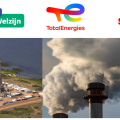 PFZW scraps funding from Total and others for failure to transition into a cleaner energy mix.
PFZW scraps funding from Total and others for failure to transition into a cleaner energy mix.
MEDIA FOR CHANGE NETWORK
Four hundred fifty victim families of the Oil Palm project in Buvuma are to receive compensation by this Friday – Witness Radio
Published
3 weeks agoon
December 17, 2025
By Witness Radio team.
Entebbe, Uganda-President Yoweri Museveni has directed the Ministry of Agriculture, Animal Industry and Fisheries (MAAIF) to compensate the oil palm Project immediately Affected Persons (PAPs) in Buvuma District, following a physical meeting with residents who had camped in Entebbe for nearly two weeks protesting delayed and selective compensation. The 450 victim families are part of over 1400 families that have lost their land to the oil palm project in Buvuma district.
The affected residents, numbering approximately 450, had sought the President’s intervention after being repeatedly excluded from the ongoing compensation process under the National Oil Palm Project (NOPP), despite earlier presidential directives on their compensation.
During the meetings on Friday and Saturday, community representatives told the President about prolonged delays, lack of transparency, and exclusion from compensation lists.
“We told the President about the back-and-forth his ministries have been sending us through, the lack of participation, and how we have been wrongly portrayed as people who do not own land when we do. Because he knows us, we reminded him of the directive he issued when he visited our area, which his ministries later claimed they were not aware of,” Witness Radio source highlighted.
President Museveni reportedly expressed surprise over the continued delays.
“I thought they had paid you. Why is it taking so long?” the President was quoted as saying during the meeting.
The President immediately directed MAAIF to work closely with the Office of the President to ensure that compensation is processed and paid without further delay.
According to the source, who attended the meeting, the President personally followed up on the matter.
“I have been directly talking to the President, and he told me that he is sending representatives from his office. He said he advised them to work with MAAIF to make sure we are compensated, and he wanted this to be done soon,” the source added.
While more than 200 residents had camped in Entebbe, the President advised them to select 20 representatives to ensure their voices are heard and that they feel included in the process.
“The President advised us to reduce to 20 people to represent the whole community since we knew what everyone wanted,” it added.
Following the President’s order, a joint meeting between representatives of the affected residents, MAAIF, and officials from the President’s Office was held yesterday in Entebbe.
It was resolved that compensation should be completed before Friday.
During the meeting and after reviewing relevant supporting documents, residents revealed that it was agreed that the government would compensate their group of approximately 450 affected persons with 16 billion Uganda shillings, which is intended to cover land loss, destroyed crops, and displacement caused by the oil palm project, clarifying how the funds will address their specific losses.
This directive comes close to two weeks after residents from Nairambi, Busamizi, Buvuma Town Council, and Buwooya Sub-counties camped in Entebbe, accusing government ministries of ignoring an earlier presidential order issued during the President’s June 18, 2025, visit to Buvuma District.
During that visit, the President had directed that all affected households be compensated and that 28 billion shillings be allocated, with 14 billion to be released immediately. However, six months later, many residents remained uncompensated, prompting renewed protests.
The compensation dispute dates back to 2018, when more than 100 residents sued the government and Bidco in Mukono High Court over forced evictions, delayed compensation, and lack of disclosure. The case was later transferred to Lugazi High Court.
During his June visit, the President advised the complainants to pursue an out-of-court settlement, promising faster compensation. This pledge, residents say, had not been honored until the latest intervention.
Even after the Ministry of Agriculture announced earlier this month that it would compensate oil palm-affected residents in Buvuma and Sango Bay, the group said it had not been consulted, prompting them to demand a meeting with the president.
As of publication, the affected residents say they are awaiting implementation of the President’s directive, hoping that the latest orders will finally bring an end to years of uncertainty and hardship.
“By Friday, we hope everything will have been processed because we submitted all the necessary supporting documents, and a team from the Office of the President is supervising the process,” it added.
According to a press statement from the Ministry, more than 11 villages are expected to benefit from the compensation exercise, indicating that many affected people are yet to be compensated. The statement revealed:
Based on the Government Valuers’ report, full payments have been made to 301 PAPs in five villages, and the Ministry plans to pay 1,405 PAPs across 11 villages.
When asked about the other communities that are not part of the initial 450 beneficiaries who ran to the president, the Ministry of Agriculture spokesperson, Ms. Connie Acayo, stated that the Ministry would follow due process, including clear criteria and verification steps, to ensure that all affected persons are identified and fairly compensated.
“Those people told us they do not want to hear about compensation procedures, valuation, or other processes associated with compensation; they only want the money. That is, maybe, why they went to the President. However, our Ministry is transparent, and we must follow established procedures when implementing such activities,” Connie told Witness Radio.
Related posts:

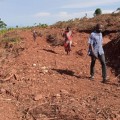 Uganda: Buvuma residents land cleared for oil palm growing before compensation
Uganda: Buvuma residents land cleared for oil palm growing before compensation
 Tension as Project-Affected Persons demand to meet Uganda’s President over Oil Palm growing on their grabbed land.
Tension as Project-Affected Persons demand to meet Uganda’s President over Oil Palm growing on their grabbed land.
 Palm Oil project investor in Landgrab: Witness Radio petitions Buganda Land Board to save its tenants from being forcefully displaced palm oil plantation.
Palm Oil project investor in Landgrab: Witness Radio petitions Buganda Land Board to save its tenants from being forcefully displaced palm oil plantation.
 Oil palm growing: New twist as Buvuma residents disown group over compensation
Oil palm growing: New twist as Buvuma residents disown group over compensation
MEDIA FOR CHANGE NETWORK
Hidden iceberg: A new report identifies large scale industrial agriculture, livestock, and mining sectors as leading sources of attacks against land and environmental defenders worldwide.
Published
3 weeks agoon
December 15, 2025By Witness Radio team
A new global analysis report highlights a concerning rise in attacks against land and environmental defenders, aiming to inspire urgent policy and advocacy responses to this escalating violence.
The 2025 Hidden Iceberg Report reveals that nearly 2,500 non-lethal attacks against land and environmental defenders were documented across 75 countries in just two years. These attacks range from threats and surveillance to arbitrary arrests and online harassment.
The report findings by the Alliance for Land, Indigenous and Environmental Defenders (ALLIED), a global network of civil society actors that supports and protects Indigenous, Land, and Environmental Defenders, cover the period 2023-24, with Indigenous communities targeted in 1 out of every 3 cases.
According to the report, these attacks rarely make the news, yet they are often early warnings of lethal violence. Studies define lethal attacks as attacks designed to kill or cause serious harm, while non-lethal attacks aim to incapacitate or control a target temporarily.
As civic space continues to shrink worldwide, defenders and communities affected by development projects are increasingly silenced when defending their community rights or territorial land rights, which are often infringed upon by governments or project implementers.
“Every killing we document is preceded by multiple threats, intimidation attempts, and harassment, but states rarely report these cases. What we see publicly is only the tip of the iceberg.” The report mentions.
“We also saw in 2023 and 2024 that attacks against environmental concern groups expanded. Representing 10.7% of all attacks, the largest number of such attacks were registered in the United States, followed by Mexico, Uganda, and the United Kingdom.” Eva Hershaw, Global Data Lead at the International Land Coalition and Co-Chair of the ALLIED Data Working Group, revealed during the report launch.
The findings paint a stark picture where Latin America accounts for 58% of all documented non-lethal attacks, with Colombia, Guatemala, Brazil, Honduras, and Mexico emerging as persistent hotspots.
“Indigenous communities are attacked not because they are weak, but because they are powerful,” said Carla García, a legal expert from Guatemala. “They protect forests, rivers, and territories that governments and corporations want to exploit. Intimidation becomes a deliberate strategy to silence them.”
In Africa, violence against defenders takes gendered forms, with women facing online abuse, sexual violence, and social stigmatization.
“When women stand up against land grabbing or destructive projects, the attacks go beyond
threats. They target women’s dignity, their families, and their bodies. Many cases are never reported because the fear of retaliation is overwhelming,” Tawonga explained.
She adds that Environmental defenders in Africa are often brutalized by the very systems meant to protect them, making the reporting of attacks both risky and rare.
Across many African countries, environmental defenders operate in contexts characterized by state surveillance, intimidation, and harassment, with security legislation and cyber laws often used to silence them. On top of that, defenders are frequently stigmatized as anti-development or anti-investment. And this harmful narrative, usually pushed by governments and private actors, paints defenders as enemies of national progress.” She added.
One primary concern is the lack of reliable data on attacks, which should motivate policymakers and institutions to improve reporting mechanisms and foster accountability.
“This data gap is not accidental. It is the result of deep structural and systemic limitations that conceal the true scale of violence against environmental defenders here in Africa,” Tawonga explained.
The analysis identifies large‑scale industrial agriculture, livestock, and mining as the sectors most frequently targeted, guiding advocacy efforts toward these high-risk areas to enhance protective measures.
The defenders raising concerns about industrial agriculture and livestock operations were most consistently targeted. They faced the highest number of attacks, representing 29% of the total. We see that three out of every four attacks raising concerns about these business sectors were concentrated in Honduras, Colombia, Brazil, and Guatemala. After industrial agriculture and livestock, mining was the next most common sector connected with attacks.” Eva added
As the climate crisis deepens and competition over land intensifies, the report warns that attacks on environmental defenders will likely worsen unless governments, corporations, and international institutions act decisively.
The report calls on states to strengthen and sustain mechanisms for collecting and reporting data, support national human rights institutions with mandates to monitor violations, and commit to transparency regarding violence against defenders. It also urges businesses to adopt and implement public policy commitments that recognize and protect the vital role of human rights defenders.
Related posts:

 Criminalization of planet, land, and environmental defenders in Uganda is on the increase as 2023 recorded the soaring number of attacks.
Criminalization of planet, land, and environmental defenders in Uganda is on the increase as 2023 recorded the soaring number of attacks.
 Human rights defenders show remarkable courage in the face of attacks and killings – new report
Human rights defenders show remarkable courage in the face of attacks and killings – new report
 African Development Bank’s Push for large scale Agriculture in Africa will spark more concerns over Food Sovereignty and Environmental Impacts.
African Development Bank’s Push for large scale Agriculture in Africa will spark more concerns over Food Sovereignty and Environmental Impacts.
 Defending tomorrow: The climate crisis and threats against land and environmental defenders
Defending tomorrow: The climate crisis and threats against land and environmental defenders

COP30 : a further step towards a Just Transition in Africa

‘Food and fossil fuel production causing $5bn of environmental damage an hour’

Four hundred fifty victim families of the Oil Palm project in Buvuma are to receive compensation by this Friday – Witness Radio

Britain, Netherlands withdraw $2.2 billion backing for Total-led Mozambique LNG

Four hundred fifty victim families of the Oil Palm project in Buvuma are to receive compensation by this Friday – Witness Radio

Women’s groups demand equality in land tenure security to boost food production.

Tension as Project-Affected Persons demand to meet Uganda’s President over Oil Palm growing on their grabbed land.

Land commission starts updating govt land countrywide.

Innovative Finance from Canada projects positive impact on local communities.
Over 5000 Indigenous Communities evicted in Kiryandongo District
Petition To Land Inquiry Commission Over Human Rights In Kiryandongo District
Invisible victims of Uganda Land Grabs
Resource Center
- REPARATORY AND CLIMATE JUSTICE MUST BE AT THE CORE OF COP30, SAY GLOBAL LEADERS AND MOVEMENTS
- LAND GRABS AT GUNPOINT REPORT IN KIRYANDONGO DISTRICT
- THOSE OIL LIARS! THEY DESTROYED MY BUSINESS!
- RESEARCH BRIEF -TOURISM POTENTIAL OF GREATER MASAKA -MARCH 2025
- The Mouila Declaration of the Informal Alliance against the Expansion of Industrial Monocultures
- FORCED LAND EVICTIONS IN UGANDA TRENDS RIGHTS OF DEFENDERS IMPACT AND CALL FOR ACTION
- 12 KEY DEMANDS FROM CSOS TO WORLD LEADERS AT THE OPENING OF COP16 IN SAUDI ARABIA
- PRESENDIANTIAL DIRECTIVE BANNING ALL LAND EVICTIONS IN UGANDA




